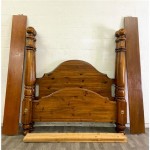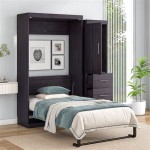Do Bed Bugs Live in Beds?
Bed bugs, tiny, parasitic insects, are notorious for their ability to infest homes and cause discomfort and anxiety to residents. While they are known to live in various locations, the question of whether they reside in beds remains paramount. This article delves into the relationship between bed bugs and beds, providing an informative overview of their presence in this environment.
Bed Bugs: A Preference for Human Proximity
Bed bugs are primarily attracted to human blood, feeding on it to survive and reproduce. They are nocturnal creatures, emerging from their hiding places at night to seek out their human hosts. This explains why beds, the primary sleeping areas for humans, serve as a prime habitat for bed bugs.
The close proximity of humans to beds during sleep offers an ideal opportunity for bed bugs to access their blood meals. They can easily crawl onto beds from nearby hiding spots and feed on their unsuspecting victims. Moreover, the warmth and humidity generated by human bodies make beds an attractive haven for these insects, providing a comfortable environment for them to thrive.
The Appeal of Bed Mattresses
Bed mattresses provide an abundance of hiding spots for bed bugs, making them a particularly valuable source of shelter and protection. The intricate stitching, seams, and folds of mattresses offer numerous crevices and cracks for bed bugs to burrow into and hide during the day. This makes it difficult for homeowners to spot bed bugs and renders them harder to eradicate.
The materials used in mattresses, such as cotton, wool, and foam, also provide a favorable environment for bed bugs. These materials offer a source of food and moisture, contributing to their overall survival. The plush nature of mattresses further facilitates movement for bed bugs, allowing them to easily navigate between different locations within the bed.
Bed Bugs Extend Beyond Mattresses
While mattresses are a major focal point for bed bug infestations, it's important to acknowledge that bed bugs can colonize other areas of the bed as well. Bed frames, especially those made of wood, can provide hiding spots for bed bugs. The crevices and cracks in wooden bed frames offer a similar environment to that found in mattresses.
Bed bugs can also be found in bedding, such as sheets, blankets, and pillowcases. These items also provide a source of shelter and a pathway for bed bugs to travel to and from their preferred hiding spots. The proximity of bedding to the human body further enhances its attractiveness to these insects.
The close association between bed bugs and beds underscores the importance of thorough inspection and control measures to prevent and manage infestations. Regular inspections, particularly for mattresses, bed frames, and bedding, can help detect the presence of bed bugs early on.

Bed Bugs Do Mattress Encasements Help Pest Management Professional

Where Do Bed Bugs Hide

Where Do Bed Bugs Live How To Find Their Hiding Spot Terminix
Unexpected Places Bedbugs Can Hide

Does My Mattress Have Bed Bugs A Z Animals
Here Are The Best Ways To Avoid Bed Bugs

Do Bed Bugs Live In Mattresses

Mattress Bed Bugs Signs Removal Memory Foam Warehouse

How To Know If You Have Bed Bugs Bon Accord

Bed Bug Wikipedia







